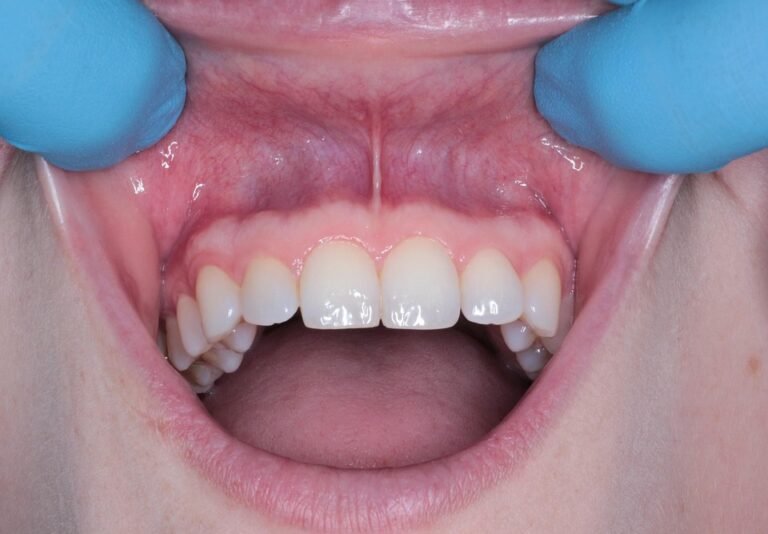How do I optimize YouTube videos for dental SEO
Okay, so I’m a dentist and I’m trying to get more patients through my YouTube channel. I’ve been posting videos about different dental procedures, oral hygiene tips, and even some "day in the life" stuff, but I’m not really seeing the results I want. Specifically, my videos aren’t ranking well when people search for dental information on YouTube or even Google (which I know pulls from YouTube).
I’ve done some basic things like adding relevant keywords to the video titles and descriptions, but I feel like there’s a lot more I could be doing. I want to attract local patients primarily, so targeting my city and surrounding areas is important. Also, are there specific types of video content that are better for attracting new patients? What are some examples of great dental youtube channels? I am looking to improve my views, watch time, and overall video rank. What am I missing? I need some actionable steps!
Answer
To optimize YouTube videos for dental SEO, you need a multi-faceted approach that covers keyword research, content optimization, on-page SEO within YouTube, audience engagement, and promotion. Here’s a detailed breakdown:
I. Keyword Research:
- Identify Target Keywords: Begin by brainstorming relevant keywords that potential patients would use to search for dental information or services. Think about:
- Services: "teeth whitening," "dental implants," "Invisalign," "root canal," "dental cleaning," "cosmetic dentistry," "emergency dentist," "pediatric dentist."
- Conditions: "toothache," "gum disease," "cavities," "bad breath," "teeth grinding," "sensitive teeth," "impacted wisdom teeth."
- Procedures: "dental crown," "dental bridge," "veneers," "oral surgery," "periodontal treatment."
- Questions: "how to brush your teeth," "what causes bad breath," "how to get rid of toothache," "how much does Invisalign cost."
- Location-Based Keywords: Add your city or region to the keywords, such as "dentist [city name]," "dental implants [city name]," "emergency dentist near me."
- Use Keyword Research Tools: Utilize tools like:
- Google Keyword Planner: A free tool within Google Ads that helps find keyword ideas and estimate search volume. Even without running ads, you can access keyword suggestions and competition levels.
- YouTube Search Suggest: Start typing keywords into the YouTube search bar and see what suggested searches appear. These are real queries people are actively searching for.
- TubeBuddy or VidIQ: These are YouTube-specific SEO tools that offer keyword research, competitor analysis, and optimization suggestions. They show keyword search volume on YouTube, which Google Keyword Planner doesn’t.
- Google Trends: See the trending topics related to dentistry and identify seasonal search patterns.
- Analyze Competitor Videos: Research the videos of other dental practices in your area or those targeting the same keywords. Pay attention to their video titles, descriptions, tags, and the keywords they’re using. This can provide valuable insights into what’s working.
- Long-Tail Keywords: Focus on long-tail keywords (longer, more specific phrases) as they often have lower competition and attract a more targeted audience. For example, instead of "teeth whitening," target "best teeth whitening for sensitive teeth at home."
II. Content Optimization:
- Create High-Quality, Engaging Content: The foundation of any successful YouTube strategy is creating valuable, informative, and engaging videos. Consider these video types:
- Educational Videos: Explain dental procedures, oral hygiene tips, and common dental conditions. Use visuals like animations, models, or before-and-after photos to illustrate your points.
- "About Us" Videos: Introduce your dental team, showcase your office, and highlight your practice’s values and expertise. These videos build trust and credibility.
- Patient Testimonials: Share positive experiences from your patients. Authentic testimonials can be very persuasive.
- Q&A Videos: Answer frequently asked questions about dental care. Address common concerns and misconceptions.
- Procedure Explainer Videos: Provide detailed explanations of specific procedures, like dental implant placement or root canal therapy.
- Behind-the-Scenes Videos: Offer a glimpse into the daily operations of your dental practice, showcasing the technology and processes you use.
- Video Length: While there’s no magic number, aim for videos that are long enough to provide thorough information but short enough to keep viewers engaged. Generally, videos between 2-5 minutes are a good starting point, but longer videos can work well if the content is compelling.
- Professional Production Quality: Invest in good lighting, sound, and video editing. Poor quality can turn viewers away. Use clear visuals and a professional microphone. Consider adding background music that is non-distracting.
- Call to Action: Clearly tell viewers what you want them to do after watching the video. This could be:
- Visiting your website
- Scheduling an appointment
- Subscribing to your channel
- Following you on social media
- Downloading a free guide or ebook
- Value Proposition: Highlight what makes your dental practice unique and why viewers should choose you. Emphasize your expertise, technology, patient care philosophy, or special offers.
III. On-Page SEO Within YouTube:
- Video Title:
- Include your primary keyword at the beginning of the title if possible.
- Keep it concise (under 60 characters) so it doesn’t get cut off in search results.
- Make it attention-grabbing and relevant to the video content.
- Examples: "Teeth Whitening: Brighten Your Smile at [Practice Name]" or "Dental Implants: A Permanent Solution for Missing Teeth in [City]"
- Video Description:
- Write a detailed description (at least 200 words) that accurately describes the video content.
- Include your primary keyword multiple times naturally throughout the description.
- Use related keywords and synonyms.
- Add a table of contents with timestamps for longer videos to improve user experience and SEO.
- Include links to your website, social media profiles, and relevant resources.
- Add a clear call to action (e.g., "Schedule your appointment today at [website address]").
- Tags:
- Use a mix of broad and specific keywords as tags.
- Include your primary keyword, related keywords, long-tail keywords, and competitor names (if appropriate).
- Use all the tag slots available to maximize visibility.
- Tools like TubeBuddy and VidIQ can help you find relevant tags.
- Thumbnails:
- Create custom thumbnails that are visually appealing and relevant to the video content.
- Use high-quality images and text that clearly communicates the video topic.
- Ensure the thumbnail is consistent with your brand’s visual identity.
- Use bright colors and contrasting text to make the thumbnail stand out in search results.
- Closed Captions (Subtitles):
- Add closed captions to your videos for accessibility and SEO.
- YouTube can automatically generate captions, but it’s important to review and edit them for accuracy.
- Closed captions help YouTube understand the content of your video and improve its ranking.
IV. Audience Engagement:
- Encourage Comments and Interaction: Ask viewers questions, encourage them to share their experiences, and respond to comments promptly.
- Create Playlists: Organize your videos into playlists based on topics (e.g., "Teeth Whitening," "Dental Implants," "Oral Hygiene Tips"). Playlists improve user experience and encourage viewers to watch more of your content.
- Use End Screens and Cards: Use end screens to promote other videos, playlists, or your channel. Use cards to link to relevant resources or websites during the video.
- Run Contests and Giveaways: Contests and giveaways can help increase engagement and attract new subscribers.
- Monitor Analytics: Track your video performance using YouTube Analytics. Pay attention to metrics like views, watch time, audience retention, and engagement. Use this data to identify what’s working and what’s not, and adjust your strategy accordingly.
V. Promotion:
- Embed Videos on Your Website: Embed your YouTube videos on relevant pages of your dental website. This improves user engagement and provides valuable content for your website visitors.
- Share Videos on Social Media: Promote your videos on your social media channels (Facebook, Instagram, Twitter, etc.). Use eye-catching captions and hashtags to attract attention.
- Email Marketing: Include links to your YouTube videos in your email newsletters and promotional emails.
- Collaborate with Other YouTubers: Collaborate with other YouTubers in the dental or health space to reach a wider audience.
- YouTube Advertising: Consider running YouTube ads to promote your videos to a targeted audience. YouTube ads can be a cost-effective way to increase visibility and drive traffic to your channel and website.
- Local SEO: Ensure your "Google Business Profile" is fully optimized and linked to your YouTube channel. This helps improve your visibility in local search results.
- Influencer Marketing: Partner with local influencers (bloggers, social media personalities) to promote your dental services and YouTube channel.
- Transcribe Videos for Blog Posts: Convert the audio from your videos into written transcripts and create blog posts on your website. This provides additional content for SEO and allows you to reach a wider audience.
By consistently implementing these strategies, you can optimize your YouTube videos for dental SEO and attract more patients to your practice. Remember that SEO is an ongoing process, so it’s important to monitor your results, adapt your strategy as needed, and stay up-to-date with the latest YouTube SEO best practices.




